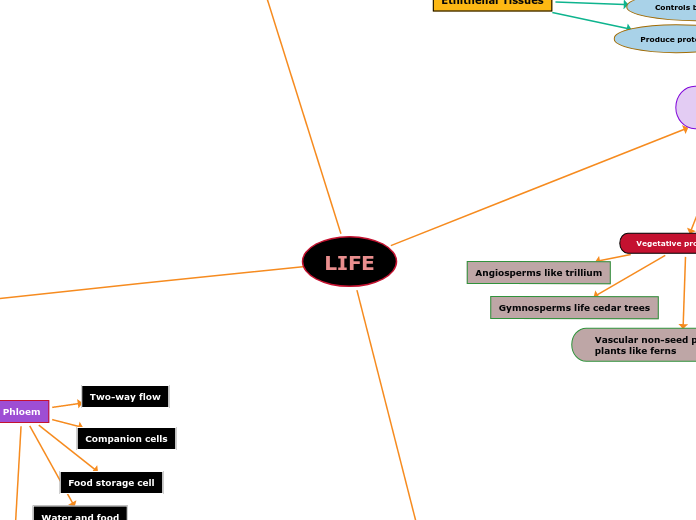
Shoot
Photosynthesis
Reproduction
Transport of food and water
Storage
Root System
Absorption of water and minerals
Transport of food and water
Reproduction
Anchorage
Transport of Plants
Xylem Tissue
Tracheils
One-way only
Water and minerals
No end walls stiffened with lignin
Phloem
Companion cells
Food storage cell
Two-way flow
Water and food
Cells have end walls with perforations
Spores
Reproductive cells that contain identical information
Sporangium will grow into a new organism
Has tough outer cases to protect the genetic material
Fragmentation
Breaks fragments into two or more pieces
Generates the missing parts from a new identical individual
Vegetative propagation
Vascular non-seed producing plants like ferns
Gymnosperms life cedar trees
Angiosperms like trillium
Binary Fission
Members of the bacterial kingdom
Protist Amoeba
Protist Paramecium
Muscle Tissue
Main support
Regulates the diameter of the vessels
Diameter plays an important role in blood pressure
Thicker in the artery
Connective Tissue
Helps keep the vessels positioned for blood flow
This layer adds structure to the vessels
Collagen Fibres
Ethithelial Tissues
Controls blood flow
Made of specialized epithelial cells
Produce proteins
Secrete substance that dilate vessels
Nervous Tissue
Nutrients
Carrying blood around the body
Evolved a circulatory system
Tissues of System
Dermal tissue system
Protection
Prevention of water loss
Ground tissue system
Support
Regenerating
Food storage
Protection
Photosynthesis
Vascular tissue system
Transport of water and minerals
Transport of food
Open Circulatory system
Blood enters the heart through pores called Astia
Blood is not always held within blood vessels
Blood fluid circulates through the body cavity
Cells of animal are bathed directly in blood
Double Closed
Blood always stays entirely inside the vessels
Delivers oxygen and nutrients
Systemis circulation
Pulmonary circulation
Single closed
Fish have closed single closed
The blood flows through the heart once during each circulation of the body